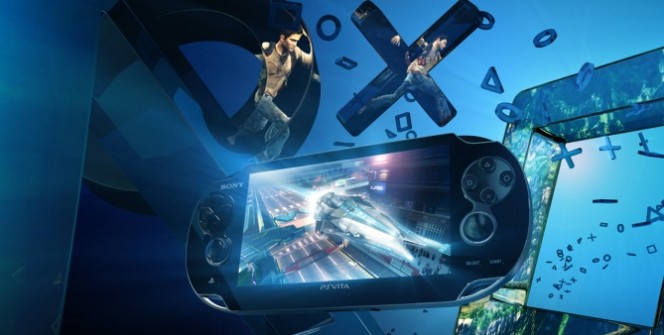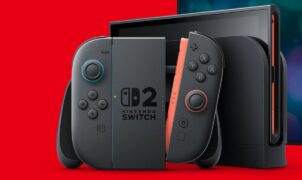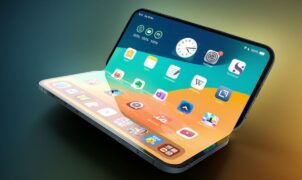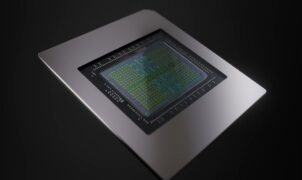After the successful PlayStation Portable (behind the shadows of the Nintendo DS), also known as the PSP, the successor did not beat the big N’s platform, the 3DS (which is still alive and kicking!).
December 17, 2011. Sony launches the PlayStation Vita on the local market, in Japan – the „life” (as Vita means just that in Latin) already hit some issues. On the launch week, or at least its first two days, the PS Vita sold 321407 units, which turned out to be less than what the 3DS achieved (On February 26 and 27, it sold 371326 units.). At least the Vita was capable of somewhat overperforming the PSP’s launch sales – the handheld, which is still reasonable today, sold 166074 units in Japan on its launch day, December 12, 2004.
There already were differences between the Japanese media and Sony‘s reports – the former said Sony shipped 700 thousand units to cover the launch sales, while the company itself revealed they made only half a million units. Let’s jump ahead in time to February 22, 2012 (although the 1st Edition Vita units were on sale in the USA from February 15, containing the more expensive, 3G/WiFi version – the cheaper Vita models had WiFi only): the initial success became only a temporary mirage at the end of the horizon, as the PlayStation Vita started selling worse than expected, which is why Sony slowly started abandoning the platform, which continued to perform decently in Japan, although the differences in the Japanese culture and lifestyle played a role. (Using trains, and playing portable (not MOBILE!) games, which slowly got mixed with iOS and Android gaming; Sony later promoted the PS Vita for children, explaining why Minecraft’s PS Vita Edition became successful over there.) However, the mobile and tablet devices gaining more and more performance took attention away from the Vita.
„Now that the PlayStation Vita has officially reached the end of its lifecycle, I think it’s time to admit that Sony‘s handheld console was a bit of a misstep. While the hardware initially represented a turning point for Sony, it struggled to achieve the same level of critical acclaim as Nintendo’s DS family of portable gaming systems,” Expert Reviews’ editor Nathan Spendelow says. The hardware was indeed different – the 5″ OLED touchscreen (which was replaced by an LCD display in the revised Vita, also dropping 3G altogether…), the dual analogue sticks (which weren’t initially present on the 3DS!), the front and back camera, and the rear touchpad could indeed feel like alien technology initially. After the PSP, the PS Vita did not use UMD discs, replacing the tech by small, proprietary game cards, as well as proprietary memory cards (which were ridiculously expensive!).
Initially, the PlayStation Vita had decent support. Multiple franchises got a new instalment on the Vita (Uncharted: Golden Abyss, LittleBigPlanet, Assassin’s Creed III: Liberation, Call of Duty: Black Ops: Declassified, Killzone: Mercenary…), and there were also quality exclusives for the handheld (Gravity Rush, Tearaway, Murasaki Baby…). However, Sony didn’t have much faith: in 2015, it announced abandoning game development to focus on the PlayStation Vita. The coffin of life got its first nail.
At this point, indie titles, as well as JRPGs, found a safe haven in the form of the PlayStation Vita, becoming a bit of underground, niche console in the process. „The PlayStation Vita found a niche as a home for indie developers and with Japanese gamers. They usually weren’t exclusive to the Vita but there was something about indie games that often clicked on Vita more than on PlayStation 3 and eventually the PlayStation 4. It’s something we’re seeing again with indies flocking to Nintendo Switch,” Stefan Langford, an editor at TheSixthAxis says, citing examples such as Thomas Was Alone and OlliOlli. „It certainly comes as no surprise that the PS Vita has finally ended production, ultimately sounding the death knell of Sony‘s mobile gaming ambitions,” Spendelow adds.
The PlayStation Vita has now deceased – its game cards’ manufacturing stopped last year, and the handheld itself hit the end of the road last week (https://www.jp.playstation.com/psvita/product-lineup/), even with Sony pushing the device. The company says the Vita sold 10-15 million units during its lifetime, which isn’t a lot: the Nintendo Switch has hit more than 32 million sales in only two years, plus that device is in a really good shape at the moment (in the United States, it often outperforms even the PlayStation 4).
The PlayStation Vita is no longer being manufactured, becoming another flop in the history of Sony. The coffin of life got its final nail. Do you remember PlayStation Mobile? Do you remember the Sony Ericsson Xperia PLAY? Probably not. But the Vita gave life in both figuratively and literally: it was able to natively run PSP and PS1 games, trying to make itself unique, which was mostly successful… but too bad it did it at the time when the mobile gaming started to kick into a higher gear. Will we ever see a new handheld from Sony? It’s unlikely – the Japanese company is now working on the next PlayStation, which hasn’t been named as PlayStation 5 (yet?)…
















Leave a Reply